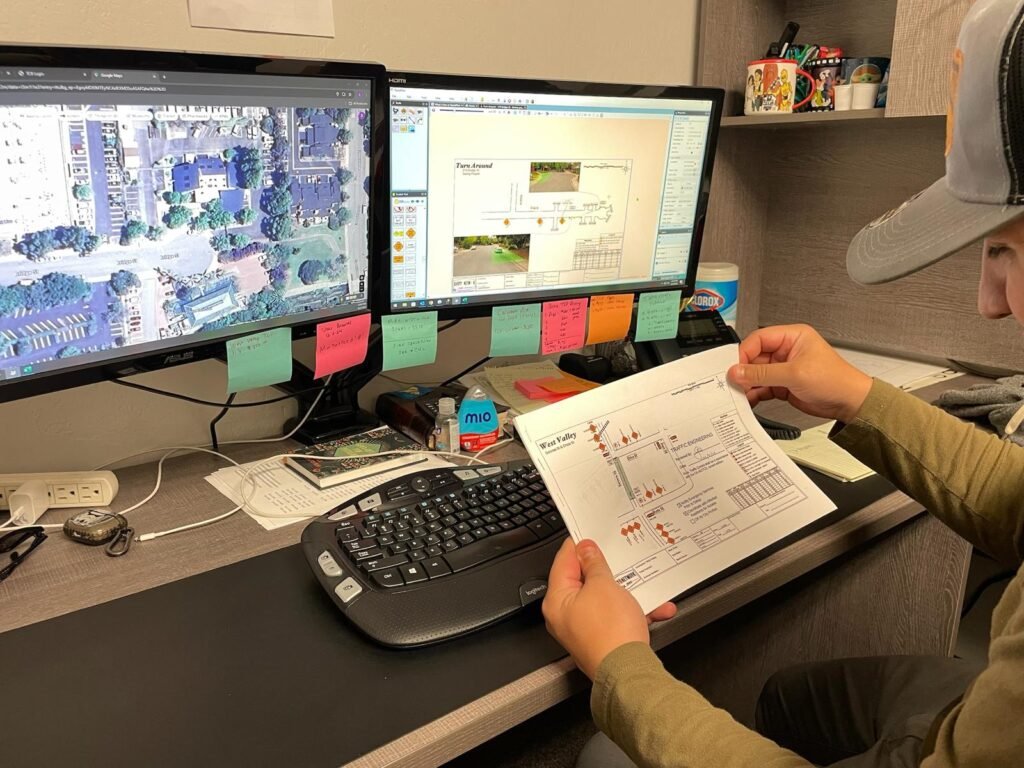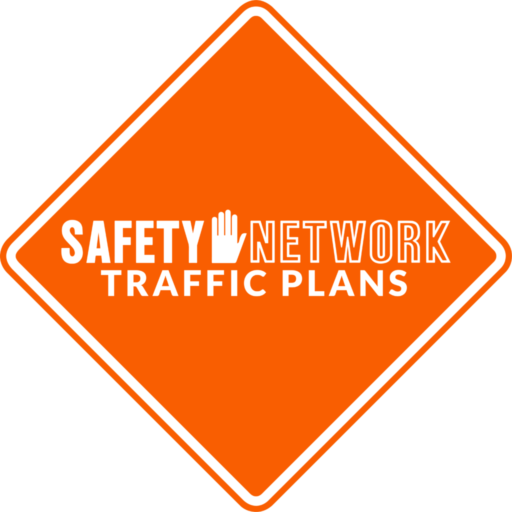In 2025, traffic control plans (TCPs) continue to play a vital role in ensuring safety on roads, especially during construction projects or events. Adhering to legal compliance in traffic control planning is essential not only for meeting regulatory requirements but also for ensuring public safety. At Safety Network Plans, we understand the importance of developing a legally compliant TCP that meets all the necessary regulations and ensures smooth traffic flow. In this article, we’ll explain what makes a TCP legally compliant in 2025 and how we can help you create a plan that meets legal standards.

1. Understanding Traffic Control Plan Regulations
A legally compliant traffic control plan must follow the guidelines and standards set by relevant regulatory bodies, including local, state, and federal agencies. These regulations ensure that traffic is managed safely and efficiently, especially in high-risk zones like construction sites.
- Why It Matters: Legal compliance is essential for avoiding penalties and ensuring the safety of both workers and drivers.
- How It Helps: A compliant TCP reduces the risk of accidents, keeps projects on schedule, and avoids costly fines that may arise from non-compliance.
2. Adherence to the Manual on Uniform Traffic Control Devices (MUTCD)
The Manual on Uniform Traffic Control Devices (MUTCD) is the primary guideline used across the United States for traffic control devices. In 2025, compliance with the latest version of the MUTCD is critical for creating a legally sound TCP. The MUTCD outlines the standards for signs, signals, barricades, and pavement markings.
- Why It Matters: MUTCD sets the standard for traffic control equipment, ensuring consistency and safety across the country.
- How It Helps: Following MUTCD guidelines ensures that your traffic control devices are legally compliant and optimized for maximum visibility and effectiveness, helping to protect road users.
3. Incorporating Local and State Traffic Control Laws
While the MUTCD provides national guidelines, local and state regulations may also have additional requirements specific to the area. A legally compliant TCP must account for these local laws, which can vary depending on the jurisdiction.
- Why It Matters: Failure to comply with local and state laws can lead to delays, fines, and even shutdowns of construction projects.
- How It Helps: By integrating local and state traffic control regulations into your plan, you ensure compliance and prevent disruptions that could affect project timelines.
4. Clear and Accurate Traffic Flow Plans
A legally compliant traffic control plan must clearly define how traffic will flow through the construction or work zone. This includes setting up detours, adjusting lane configurations, and ensuring proper signage is placed for optimal guidance.
- Why It Matters: Poorly planned traffic flow can lead to congestion, accidents, and confusion for drivers.
- How It Helps: A clear and accurate plan helps direct traffic efficiently, reducing delays and minimizing the risk of accidents. It ensures that drivers understand where to go and what to expect in construction zones.
5. Proper Signage and Road Markings
The appropriate use of signage and road markings is essential to comply with traffic control regulations. The correct signage ensures that drivers are alerted to potential hazards, detours, or road closures in advance, while road markings help guide vehicles safely through the area.
- Why It Matters: Inadequate or unclear signage can result in confusion, accidents, or non-compliance with legal requirements.
- How It Helps: Properly placed signs and clear road markings ensure that drivers understand traffic patterns, improving safety and ensuring compliance with legal standards.
6. Planning for Pedestrian and Bicycle Safety
A legally compliant traffic control plan must also account for the safety of pedestrians and cyclists, especially in areas where they may need to navigate around construction zones. Providing safe passage and clear routes for non-motorized users is a critical component of traffic control.
- Why It Matters: Pedestrian and bicycle safety is often overlooked in TCPs, leading to potential accidents and legal issues.
- How It Helps: By including specific plans for pedestrian and cyclist safety, your TCP ensures compliance with accessibility regulations and reduces the risk of injury in work zones.
7. Temporary Traffic Signals and Flashing Lights
In some cases, temporary traffic signals and flashing lights may be necessary to control traffic in work zones or areas with high congestion. These systems must meet the legal requirements set by the MUTCD and local authorities to be considered compliant.
- Why It Matters: Temporary traffic signals and flashing lights help control the flow of traffic and alert drivers to changing conditions.
- How It Helps: Implementing these systems correctly ensures that drivers are informed of the work zone and can navigate it safely, improving overall traffic safety.
8. Regular Updates and Documentation
A legally compliant TCP is not static; it must be updated as conditions change. Regular documentation of updates, including changes in traffic patterns, signage, and barriers, ensures that the plan remains compliant with evolving regulations.
- Why It Matters: Construction projects often change or evolve, requiring updates to the traffic control plan to maintain legal compliance.
- How It Helps: Regularly updating the plan ensures that the TCP stays compliant throughout the project, minimizing the risk of legal issues and ensuring continued safety.
9. Collaboration with Law Enforcement and Local Authorities
Collaboration with local law enforcement and authorities is essential when developing a legally compliant traffic control plan. They can provide valuable insights and help ensure that your plan meets all necessary safety and legal requirements.
- Why It Matters: Local authorities can provide input and oversight to ensure that the traffic control plan adheres to all legal requirements.
- How It Helps: Collaborating with law enforcement and local agencies ensures that your TCP is fully compliant with all necessary regulations and that the project runs smoothly.
Conclusion
In 2025, a legally compliant traffic control plan is essential for ensuring road safety and avoiding legal complications. By following national guidelines like the MUTCD, considering local regulations, and incorporating best practices for traffic flow, signage, and pedestrian safety, you can create a plan that meets legal standards. At Safety Network Plans, we specialize in helping businesses and organizations develop compliant and effective traffic control plans. Contact us today to ensure your next project is safe, efficient, and legally sound.


